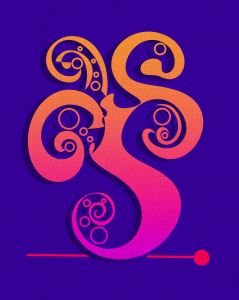17.06.2024

Hard. Unyielding. Dead. A stubborn thing a stone. Yet, even so, there are men that make love to the stone.
And as I think about the stone, a memory glides up from the depths. A memory from childhood.
As was often the case with my grandfather, a fine day would mean a fine walk. It was a habit he instilled in me, walking for a long time and talking for a long time. Even today, with some of my closest friends, we will walk for three or four hours after work or a whole day if I am not working. Walking and talking. With my grandfather, I would be his closest companion because I was his crutch. He was partially sighted. So he would clasp my arm and I would be his eyes and feet, scanning the ground for him and crossing the road with him.
The walk that day took us up to some factories in Essex – my grandfather was visiting us from London on that occasion with my grandmother. And then we noticed that the floor was strewn with pebbles.
‘Did you know…’ my grandfather began, ‘that there are a type of stone which confers wisdom?’ My grandfather came from the generation that believe in magic. He attributed his first job after his university degree to a visit to the Hanuman temple in the mountains. He believed in witchcraft and black magic.
‘The stones that you need to find have bands in them. If you find a stone with one band in it, then that is the first step towards knowledge. If you find a stone with two bands in it, then that is the second step towards knowledge. And if you find a stone with three bands within it, then that is the third step towards knowledge… What do you say, will you find?’
I remember scrabbling in the stones on the ground, picking up one after the other, absorbed in the quest to find these stones that conferred wisdom. Incredibly, or fatefully, in just one search of thirty minutes, I found each of the wisdom stones that my grandfather had mentioned.
I have kept them my whole life.
Later on in life, we were at a training session at a place that I volunteered and they asked us to bring some personal items in. I brought the wisdom stones. I described what they were and where I found them. I told her that I took them into my ‘A’ Level exams with me as luck. The trainer asked me if I believed in them. I said no. Then she asked me how I did in school. I told her that I was the top student with six ‘A’ Levels and with ‘A’ grades. She would not believe that I did not believe in the stones. I tried to explain to her – she did not understand. They were the memory of my grandfather and his stories.
Why is the wisdom in the stone? The stone appears to be durable, resilient, strong and eternal. Knowledge itself we feel would have those qualities within it. And the bands? They are unique. And they add layers to the stone. Knowledge itself is multi-layered. The more the layers, the more knowledge the stone confers. The more nuance, appreciation, insight. For about thirty years I have carried these knowledge stones with me. And I know that they are heavy. Because knowledge itself is heavy. It is a load to bear throughout life.
And the stone is also plain. It looks like nothing. It is worth nothing to most people. Because the world is ruled by the ignorant that hate wisdom. Not the wise.
Who to share the stones with? Who to share the burden with? One day, there will be an heir. The bearer of the stone that is knowledge.

